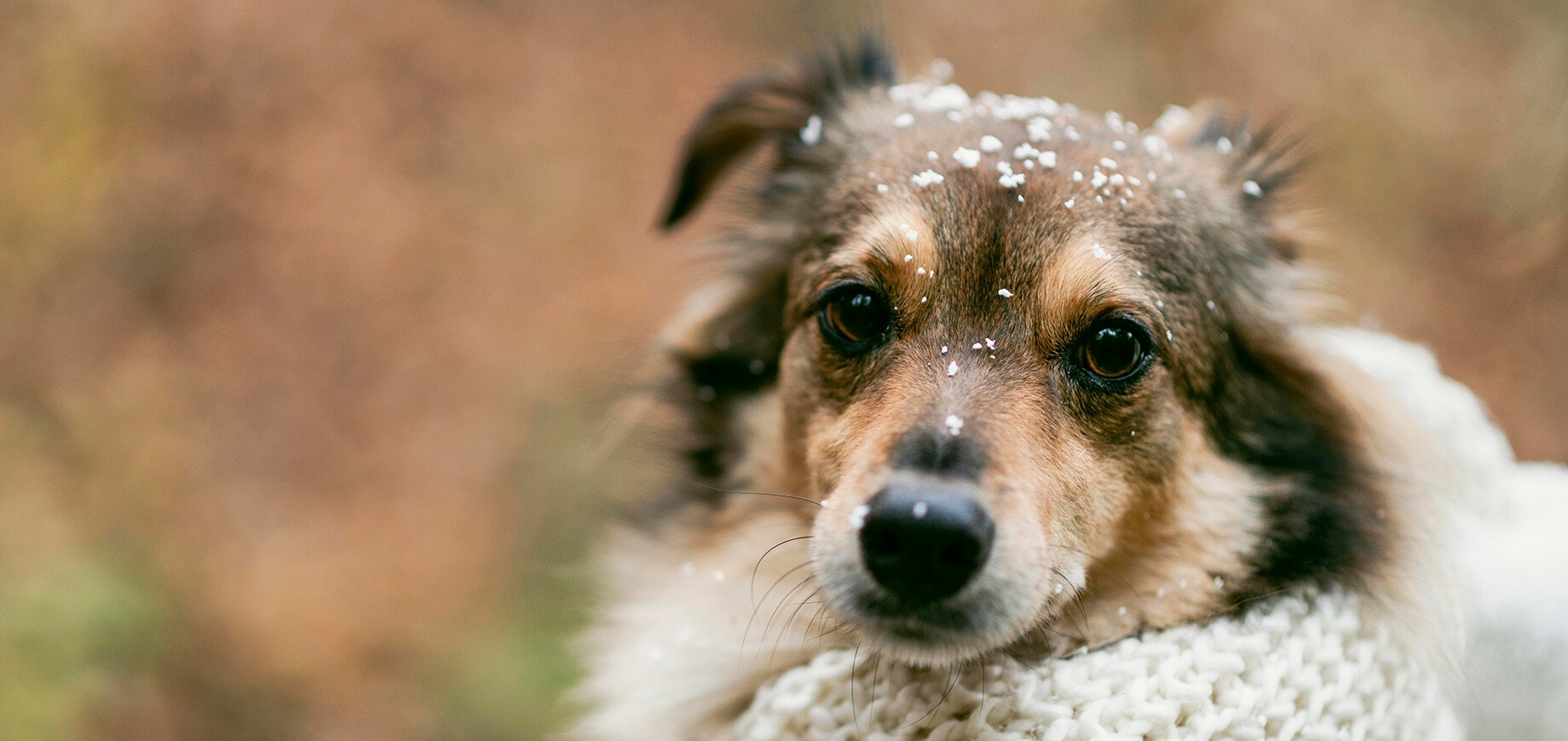

As a loving dog parent, you may be concerned if your dog’s ears are cold to the touch. Often, the reason why is due to the weather. Blood circulates around your dog’s body to keep them warm, however it is slower to reach their external body parts, such as their ears, paws and nose. This is because your dog needs to conserve heat in cold weather, and so blood flow to their ears may be decreased, leading to your dog’s cold ears. And of course, outer body parts are naturally most impacted by external temperatures.
However, it could also be due to a number of underlying medical conditions. This is why it’s essential that dog parents understand why their dog’s ears are cold, in order to rule out any health concerns. In this article, we help dog parents understand the different reasons behind their dog’s cold ears, from cold weather to health concerns, which breeds are more susceptible to cold ears and how to keep your dog safe and warm.
A dog’s ears can be cold for various reasons, but most commonly it is due to cold weather. However, poor blood circulation, illnesses and infections can also be the cause, as these can affect how dogs regulate their body temperature. It could also be due to your dog’s breed characteristics.
More often than not, your dog’s cold ears are a normal response to cold weather, especially if they have certain characteristics due to their breed. The anatomy of your dog’s ears can contribute to their temperature, such as the shape, size, position and amount of hair. Dogs with large, thin or floppy ears may experience cold ears due to the increased surface area, and dogs with pointy ears are more exposed too. Also, the amount of fur covering a dog’s ears can vary between breeds, and less insulation can make dogs more susceptible to the cold. It’s important for dog parents to take their dog’s breed characteristics into consideration when looking after their well-being in colder seasons, including simple things such as when to wash your dog, to prevent them from getting too cold.
It’s also essential that dog parents look out for other signs and symptoms that may indicate an underlying health issue. Dog parents should look out for persistent coldness even when their dog is warm and indoors, any changes in behaviour, signs of pain or discomfort, or discharge or smell from their ears. If you’re ever concerned about your dog’s cold ears, you should consult a veterinarian.
In some cases, your dog’s cold ears could be related to their health. Some dogs may just have poor blood circulation, and this is particularly common in younger and senior dogs, as well as dogs with an injury. However, poor blood circulation is often caused by underlying health conditions such as hypothyroidism and heart problems, since the amount of blood flow to external body parts is reduced with these conditions. Similarly, autoimmune diseases can also affect a dog's ability to regulate their own body temperature, resulting in dogs having cold ears. Ear infections can also cause inflammation and discharge, as well as affect blood flow within the ear. However, in the case of infections, the ear would feel hotter than usual.
It’s essential that in any case, dog parents should seek veterinary advice if they’re concerned about their dog’s cold ears being persistently colder than the rest of their body, instead of diagnosing or treating the problem at home. This can help rule out or detect any underlying medical issues.
Just like humans, cold weather can cause cold ears in dogs. As the blood circulates around your dog’s body, their blood vessels may constrict to retain heat for their major organs. Since blood circulation takes longer to reach your dog’s external body parts, this can cause your dog to have cold ears.
Dog parents can help keep their dog’s ears warm by taking some precautions. For instance, you should ensure your dog has cosy bedding with warm blankets to stay cosy. You may even consider buying a suitable dog coat to keep your dog warm and dry during cold weather walks. It’s also helpful in the winter to take your walks during the afternoon, as opposed to in the morning or evening when the temperatures are lower. You should also consider taking shorter walks in extreme cold temperatures to not expose your dog to the elements for too long.
You will know when your dog is cold if you notice them shivering, chattering their teeth and assuming a hunched position whilst tucking their tail. You may also notice your dog seeking shelter, seeming anxious or appearing weak. If you notice any of these signs, warm your dog up quickly.
You should also be wary of conditions such as frostbite or hypothermia, both of which can be caused if your dog is exposed to cold temperatures for a long period of time. Dog parents should be concerned if their dog is really cold and shivering, or if their skin is swollen or blistered, or pale, black or blue in colour. If your dog’s body temperature is lower than 37°C or you notice any concerning signs or symptoms, contact your vet as soon as possible.
In order to prevent cold ears in dogs, it’s important to understand your dog’s breed characteristics. Certain dog breeds may be more prone to cold ears due to their genetics. For instance, Chihuahuas are known for their small size - and since their ears are small too, they can feel cold more quickly than large dog breeds. On the other hand, Greyhound dogs have lean bodies with short fur, meaning their ears are not as insulated and therefore can result in them feeling cold too. Basset Hounds also experience cold ears since they have long and floppy ears which are closer to the ground and more exposed to cold weather.
Dog parents can care for their dog’s ears in colder seasons by taking necessary precautions. Dogs with short fur, like Greyhounds, may benefit from wearing a dog coat to keep their entire body warm. If outerwear is unsuitable for your dog, consider limiting their time outdoors in cold weather, and make sure to warm them up indoors afterwards.
Also, for dogs that regularly have their coat clipped, you could consider leaving the coat longer and thicker - especially over their ears. During the colder months, this can help provide natural warmth and protection from the cold.
It’s natural - and responsible - for dog parents to look out for their dog’s wellbeing, even when it comes to their ears. While cold ears in dogs is expected in cold weather, it’s important to rule out any health concerns in case there is something else going on. Ear infections are also a common problem in dogs, and could also be the reason why your dog’s ears are cold, although normally with an infection the ears will feel hotter than usual. Learn more about how to clean your dog’s ears to keep them happy and healthy.

